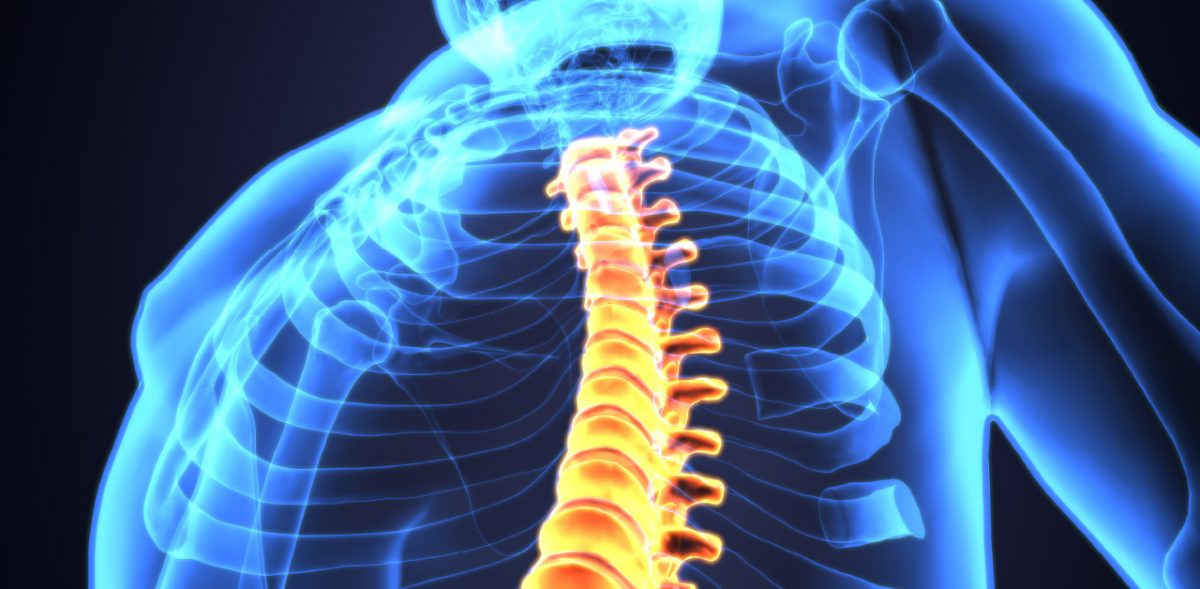National Spinal Cord Injury Awareness Month

About 284,000 people in the United States live with spinal cord injuries.
The spine has many functions. It holds us upright and helps us twist, turn, and bend. It protects all nerves passing messages between our brain and body. However, most of us barely think twice about our spines until something goes wrong.
September is National Spinal Cord Injury Awareness Month. The goal of this month is to raise awareness and support research into spinal cord injuries.
Keep reading to learn more about spinal injuries.
What Is a Spinal Cord Injury?
A spinal cord injury is any damage to the spine or its nerves. It is not the same as a back injury which merely impacts the bones or muscles.
A spinal cord injury can result from trauma, such as a physical accident. It can also result from disease or degeneration.
A spinal cord injury does not only lead to chronic pain, but it can also impact your strength, mobility, and body functions. It can impact your ability to work and live the life you used to have.
Men are more susceptible to spinal cord injuries than women. People with spinal cord injuries have a higher risk of mortality. They may also experience loss of bladder and bowel control, breathing difficulties, and blood pressure problems.
Types of Spinal Cord Injuries
Spinal cord injuries are categorized according to where and how severe they are. They can affect four different parts of the spine, influencing the severity.
- Cervical injuries
- Thoracic injuries
- Lumbar injuries
- Sacral cord injuries
These are the two main types of spinal cord injuries:
Complete Spinal Cord Injury
In this case, the patient will have lost all feeling and motor function below the level where the spinal cord injury occurred. Paraplegia and Tetraplegia are examples of complete spinal cord injuries.
Incomplete Spinal Cord Injury
When you retain some feeling and movement below the level of the injury, it is called an incomplete spinal injury. People with incomplete injuries have a greater chance of recovery.
Incomplete spinal injuries are usually classified according to the affected part of the spinal cord: the central cord, anterior cord, posterior cord, nerve roots, or side of the spine.
Common Causes of Spinal Cord Injuries
The main causes of spinal cord injuries are traumatic events such as car or motorcycle accidents, falls, or violence from a gunshot or knife.
Here are other common causes:
- Sports injuries
- Diving accidents
- Trampoline accidents
- Birth injuries
- Spinal cord infections
- Cancer
- Arthritis
When a traumatic blow or wound crushes or dislocates the vertebrae, which provide spinal cord protection, the nerves passing through the area are affected.
When to Seek Emergency Medical Attention
If you have been in an accident or had a fall, it is vital to keep an eye out for symptoms of a spinal cord injury.
These include:
- Muscle weakness in the arms or legs
- Loss of feeling in arms, muscles, or legs
- Breathing problems
- Neck or back pain
- Loss of bowel or bladder control
If you experience these symptoms, it is best to get to an emergency room immediately for diagnostic tests and treatment.
Support National Spinal Cord Injury Awareness Month
National Spinal Cord Injury Awareness Month is the perfect time to learn how to protect your spine and the importance of supporting research into spinal cord injuries.
If you are concerned that you may have suffered a spinal cord injury, head to our emergency room in Cibolo, TX. We offer immediate and high-quality emergency care.
Sources:
“Spinal Cord Injury Facts and Figures at a Glance.” National Spinal Cord Injury Statistical Center. 2020. https://www.nscisc.uab.edu/Public/Facts%20and%20Figures%202020.pdf
“Spinal Cord Injury.” World Health Organization. 19 November 2013.
https://www.who.int/news-room/fact-sheets/detail/spinal-cord-injury
“Acute Spinal Cord Injury.” Hopkins Medicine. Retrieved 14 September 2022.


